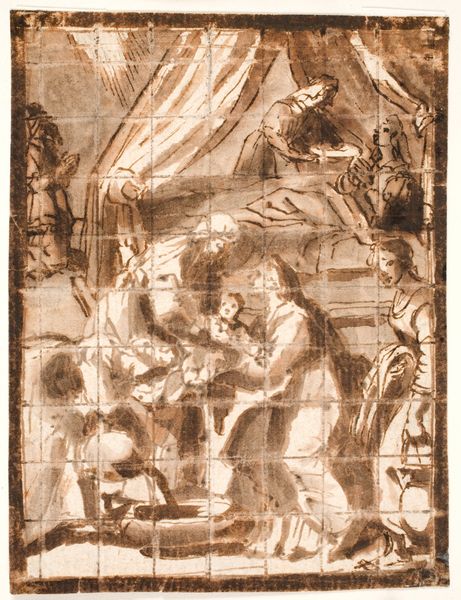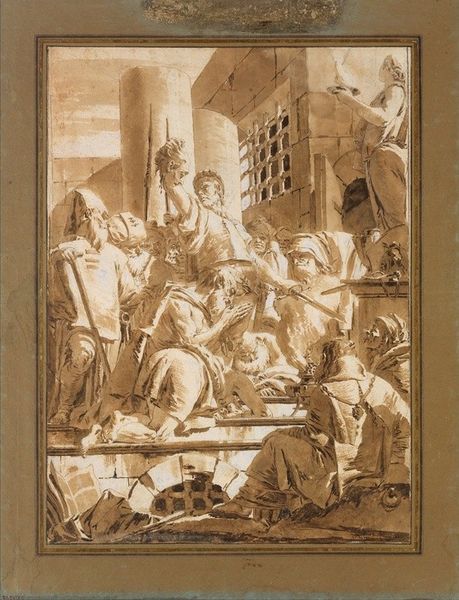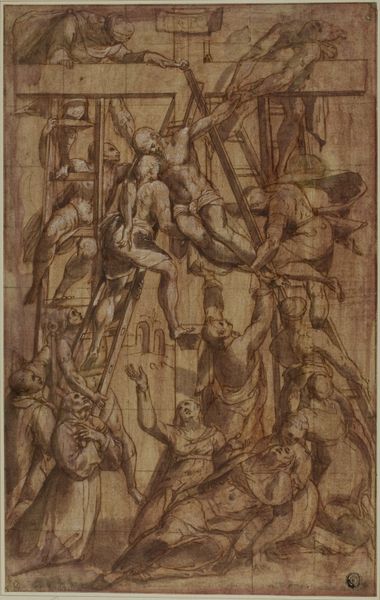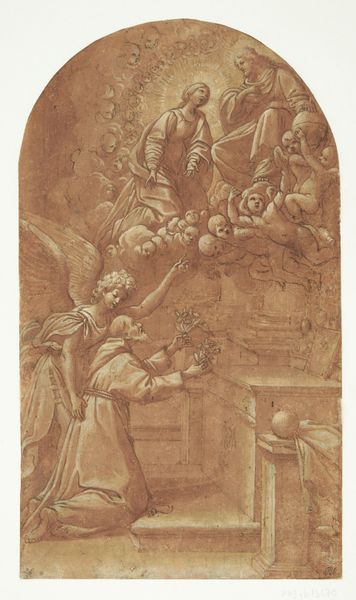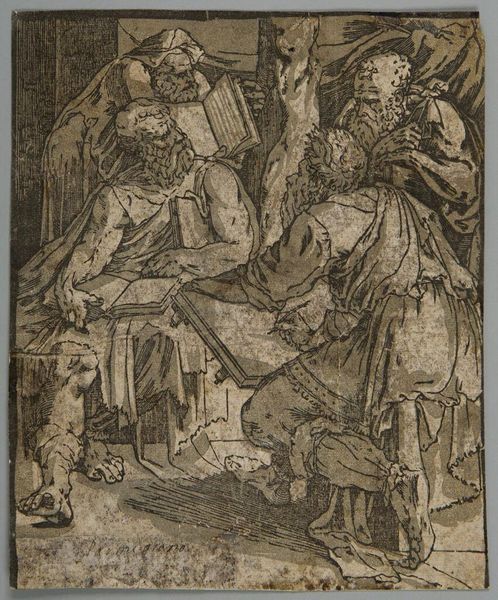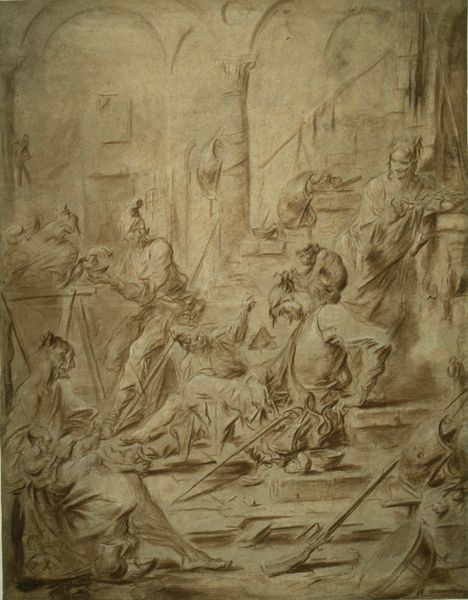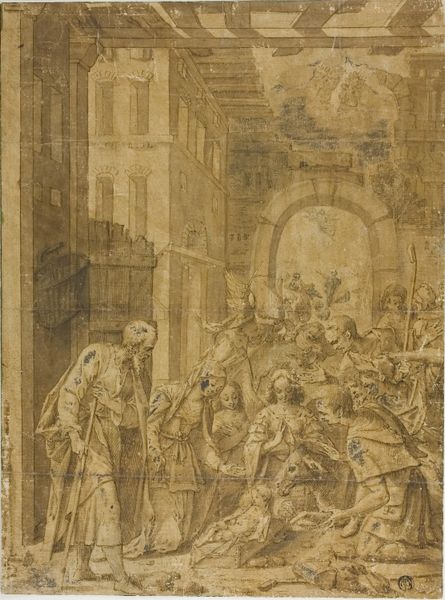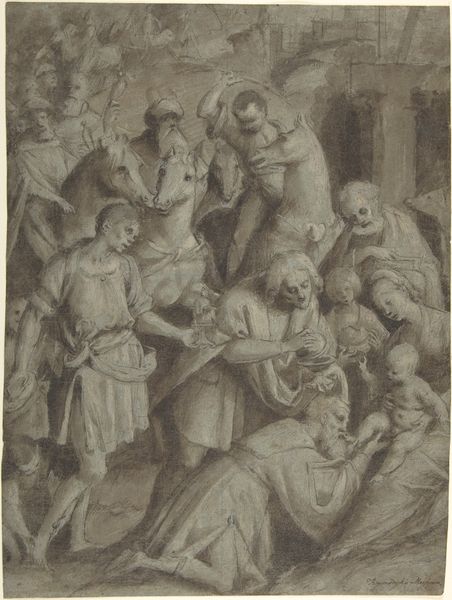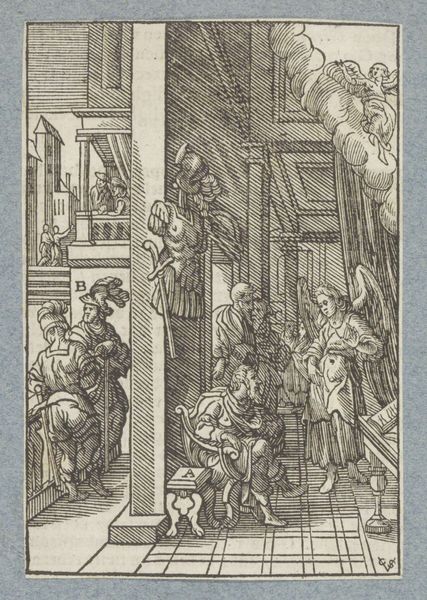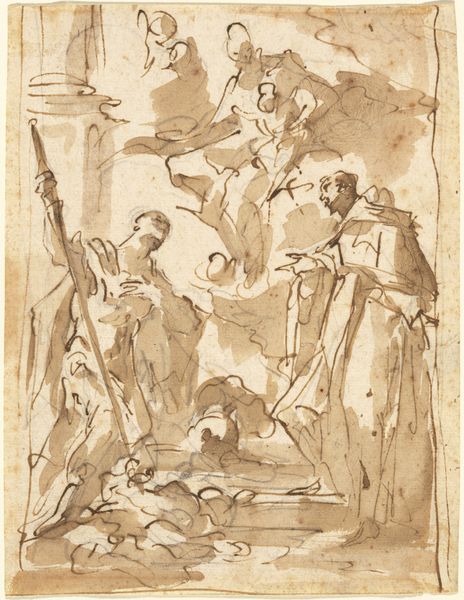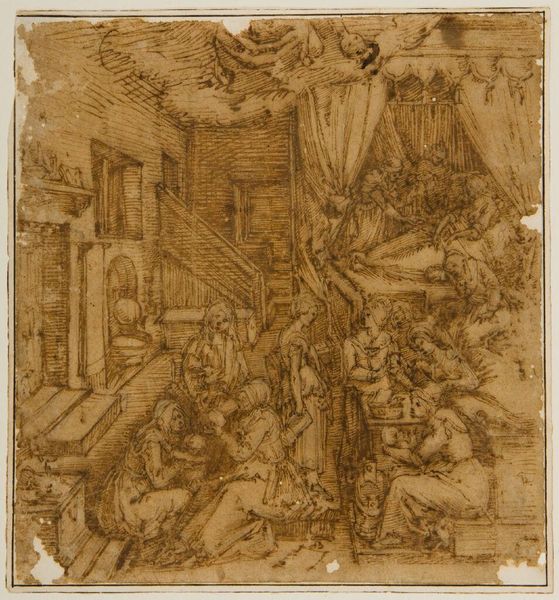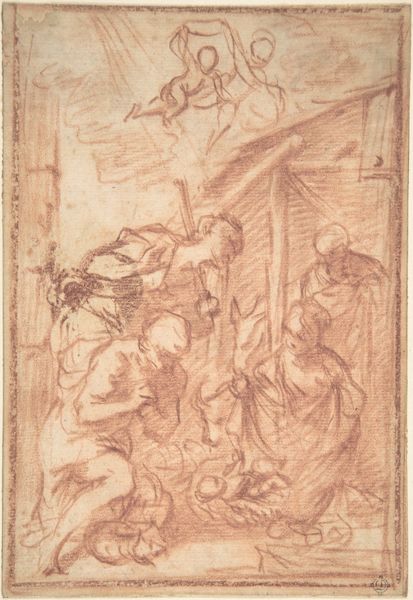
drawing, tempera, charcoal
#
drawing
#
toned paper
#
tempera
#
charcoal drawing
#
figuration
#
11_renaissance
#
charcoal
#
history-painting
#
italian-renaissance
Dimensions: 254 mm (height) x 172 mm (width) (bladmaal)
Curator: The sepia tones of this drawing create an immediate sense of warmth and antiquity. What do you make of it? Editor: The composition is compelling—a flurry of dynamic lines converge upon the central figures of the Virgin and Child. It's almost as though the artist aimed to distill the pure emotion of adoration. Curator: That is a good point. This work, "Adoration of the Shepherds," comes to us from Filippo Tarchiani, likely made sometime between 1576 and 1645. The artist employed tempera and charcoal, notably on toned paper, lending it a very distinctive feel. Editor: Toned paper was rather common, and here it really supports a depth that’s remarkable for a drawing, which creates such dynamism. I notice how Tarchiani has used a kind of compositional symmetry, where a more chaotic background—or environment, shall we say—enhances the centralized placement of Mother and Child. Curator: The piece also provides some hints to the era's social dynamics. Notice how Tarchiani subtly underscores the divine through depictions of celestial beings, positioning the shepherds—representing the working class—in poses of reverent supplication before the infant Jesus, really echoing the religious and class structures of the Renaissance. Editor: Interesting that you focus on socio-historical factors when this simple sketch is a study in pure feeling! Do you feel it captures any specifics beyond just the sentiment that accompanies adoration? Curator: Art always operates within a context. This drawing reminds us that religious art served to reinforce institutional authority but, equally, to stir personal reflection among the devout. It played a crucial role in shaping moral attitudes within the Renaissance. Editor: While I see the social functions of the Renaissance, the visual elements within "Adoration of the Shepherds" offer us something eternal in how the composition generates that feeling. Ultimately, for me, it's about raw, expressive power. Curator: I agree; art serves a purpose beyond what the authorities decide for it, its impact will live on forever.
Comments
No comments
Be the first to comment and join the conversation on the ultimate creative platform.
